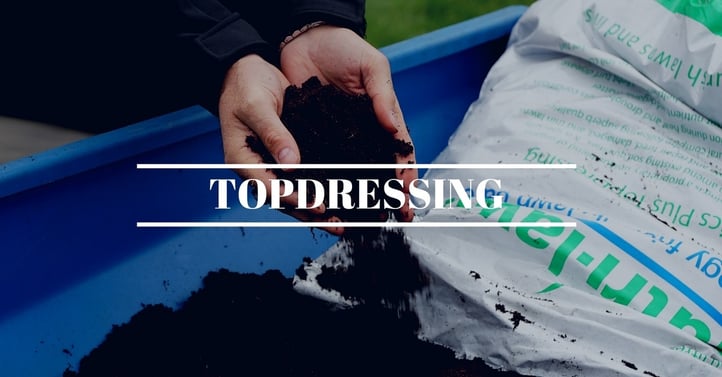8 min read
Tips For Repairing A Patchy Lawn
By: Shawn Karn, The Grass Expert on May 20, 2021 3:25:49 PM
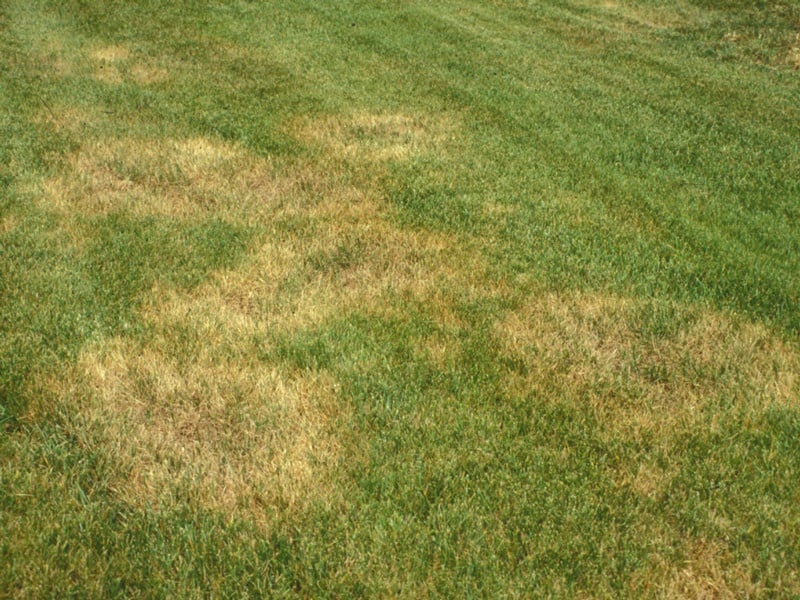
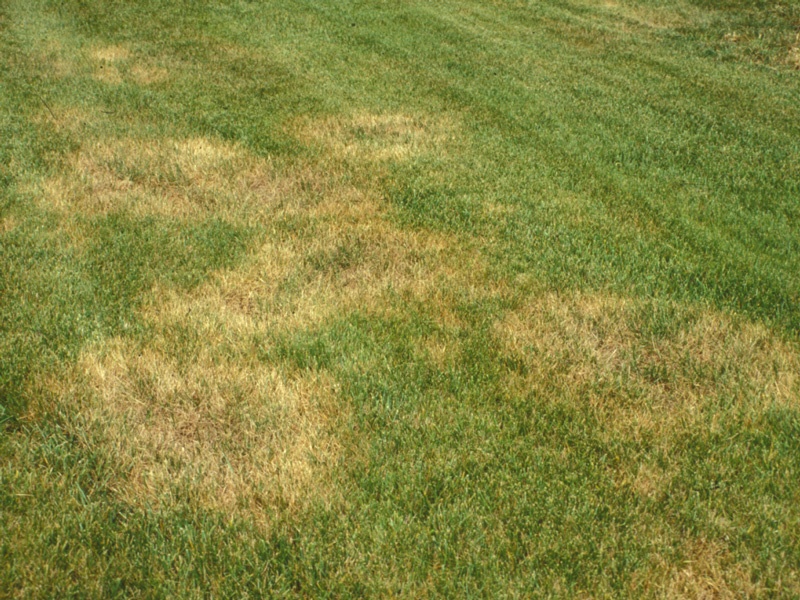
They say that beauty is in eye of the beholder, but when it comes to lawn care, I think we can all agree that no one likes a patchy or bare lawn. If you walk out to your front yard or backyard and see bald, weak, thin, or bare patches in the grass, try not to lose your cool; you can definitely repair them with Nutri-Lawn's help and a little bit of TLC.
Seeding is a great way to freshen up your lawn and give it a minor makeover. But before you get started, it's important to find out what caused the patchiness in the first place.
What Causes Bald Spots?
Thin or bare areas of a lawn can be a result of a number of lawn care issues, such as;
- Heavy foot traffic, resulting in soil compaction
- Turfgrass disease
- Prolonged drought
- Weed infestations
- Insect infestations
- Heavy shade from trees
- Debris and items covering lawns
- Misapplication of control products
It's important to investigate what the underlying issue might be, and try to remedy it to avoid future bald patches. If you're no detective, speak to a lawn care professional at Nutri-Lawn and they'll look at things such as your soil condition and help you get to the bottom of it.
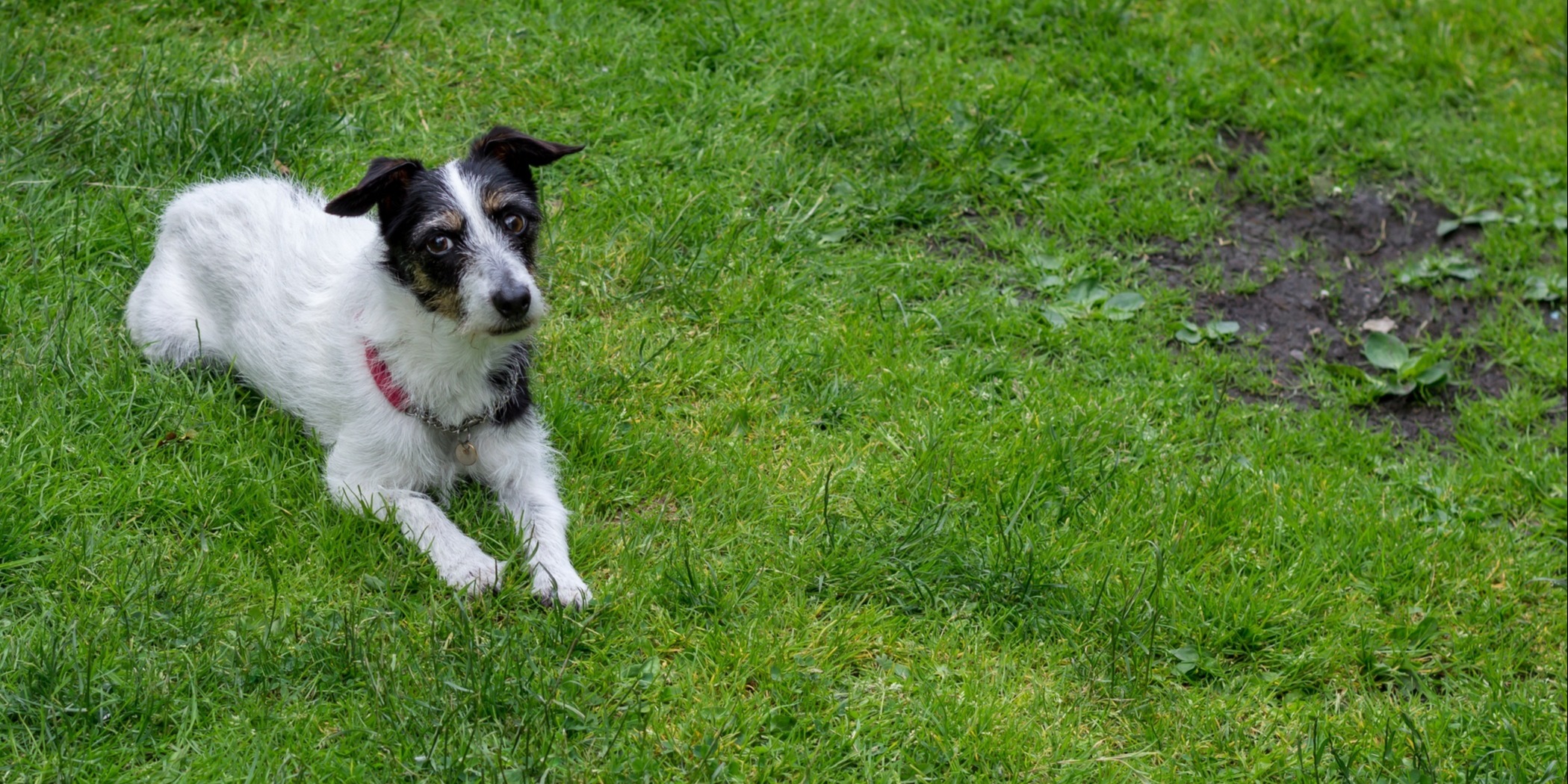
Repairing Bare Areas
For small areas no bigger than the size of your fist, hand spot seeding is an effective method of seeding that you can do yourself.
For lawns that are thin, weak, or have multiple minor areas of concern, overseeding is an ideal solution. Most lawn care professionals recommend overseeding your lawn at least once a year, in the Spring or the Fall. This is best done with a push spreader.
Whether you're spot seeding or overseeding, timing is important. Seeding projects are best done in the Spring or the Fall when air and soil temperatures are not too warm or too cold, and when natural rainfall is common.
Prior to hand spot seeding or overseeding, there are a number of things you need to consider for best results.
1. Correct Soil Compaction and Soil pH Issues
If your soil is compacted from too much foot traffic, then you need to consider core aeration. Equally, if your soil is suffering from an acidic pH, then you also need to consider adding lime to your lawn. Both of these services should be done to ensure good seed establishment.
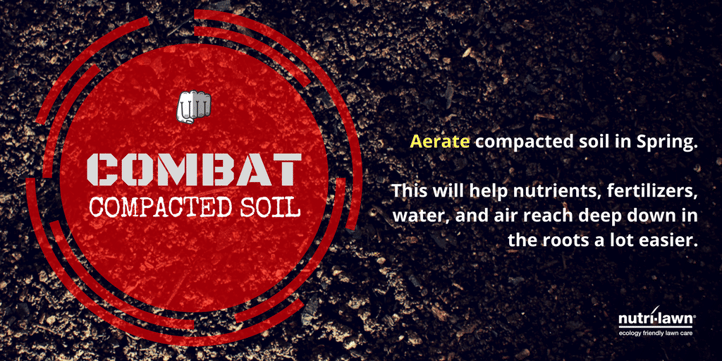
2. Prepare The Area
Before you get seeding, you need to get rid of any weeds in the area you're going to reseed. Scratch the bare surface with a rake so that the soil is broken up and seed-to-soil contact is optimal.
3. Use Good Quality Grass Seed
The worst thing you can do is buy a seed just because it was on special. Make sure you buy the correct seed based on your grass type, as well as the best seed for your local conditions. If you're not sure, talk to a lawn care expert and they'll help you decide what's best for you.
Some other considerations include;
- Use a seed mixture, as opposed to one cultivar. A variety of grass seed species and cultivars results in good biodiversity in the lawn.
- Use certified seed selected to address specific disease or insect resistance.
- Use seed that addresses environmental factors like shade or drought.
/Grass_Types_twitter.jpg?width=722&height=361&name=Grass_Types_twitter.jpg)
4. Ensure Seed-to-Soil Contact
With any seeding project, the seed must be in contact with soil to get good results. If seed is simply sprinkled on the surface of a lawn with excessive thatch, the seed may germinate, but the tiny roots of the newly germinated seed will never make it to the soil, and will die during the first hot, dry period.
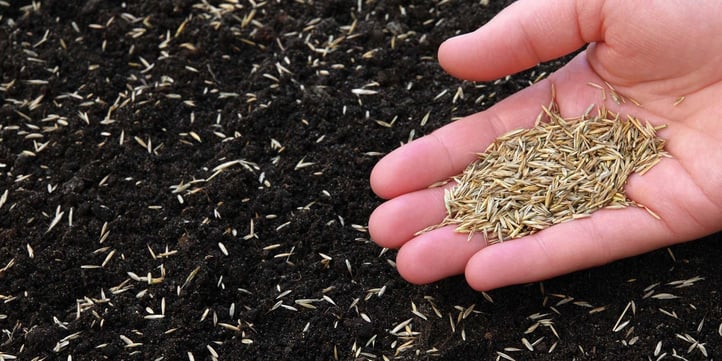
5. Use a Starter Fertilizer
Starter fertilizers help the newly germinated seeds get an abundant supply of phosphorous, even though they initially have a small root system. The nitrogen component is usually small in order to encourage root development as opposed to leave growth.
6. Apply Topdressing
Applying topdressing after seeding is always a good idea. Spreading a thin layer of weed-free, topdressing adds valuable nutrients, organic matter, and micro organisms to your lawn that fight plant disease, improve heat and drought stress, and optimize seed germination and turf establishment.
Our Organic Topdressing also has an abundant supply of natural phosphate that is slowly available to the newly germinated grass plants.
Germination
The most important rule to follow when establishing grass seed is "if the seed dries, it dies." Water is essential and without it the seed simply cannot germinate.
Maintaining a light, frequent watering schedule multiple times a day until the grass fully establishes is vital. This ensures the seed always stays moist and doesn't dry out.
Each grass species germinates at a different speed. Assuming optimal weather and growing conditions, some seed (such as Perennial Ryegrass) can germinate as quickly as 4-7 days, while others (like Kentucky Bluegrass) can take as long as 21 days.
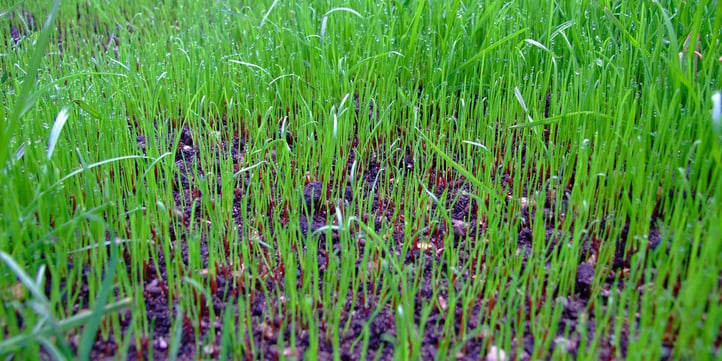
Establishment and Aftercare
Depending on the grass species, it can take several weeks or months before the seedlings are fully established. As they mature, they develop an independent root system required to grow healthy and withstand natural stresses.
As new seedlings are tender and can be easily damaged, it is best to wait 4-6 weeks after full germination before regular mowing practices can begin again.
Watering can also be adjusted to a deep and infrequent schedule, provided the seedlings are not stressed.
Balanced fertility is recommended to maintain and provide the essential plant nutrients the seedlings require for healthy establishment and growth.
Talk to your local Nutri-Lawn about their seeding solutions. Plus, follow us on Facebook or Pinterest for weekly lawn care tips and tricks.
Related Posts
How To Fill In Bare Areas Of Your Lawn
Noone likes a patchy lawn. If you walk out to your front yard or backyard and see bald, weak,...
Aerating and Overseeding Your Lawn In Fall
Fall is arguably the most photogenic season, and guess what? It's finally here!
The Fall months...
Fall Lawn Care: Tips & Timing
Fall is officially here and our lawn care experts at Nutri-Lawn Vancouver want to make sure you’re...



